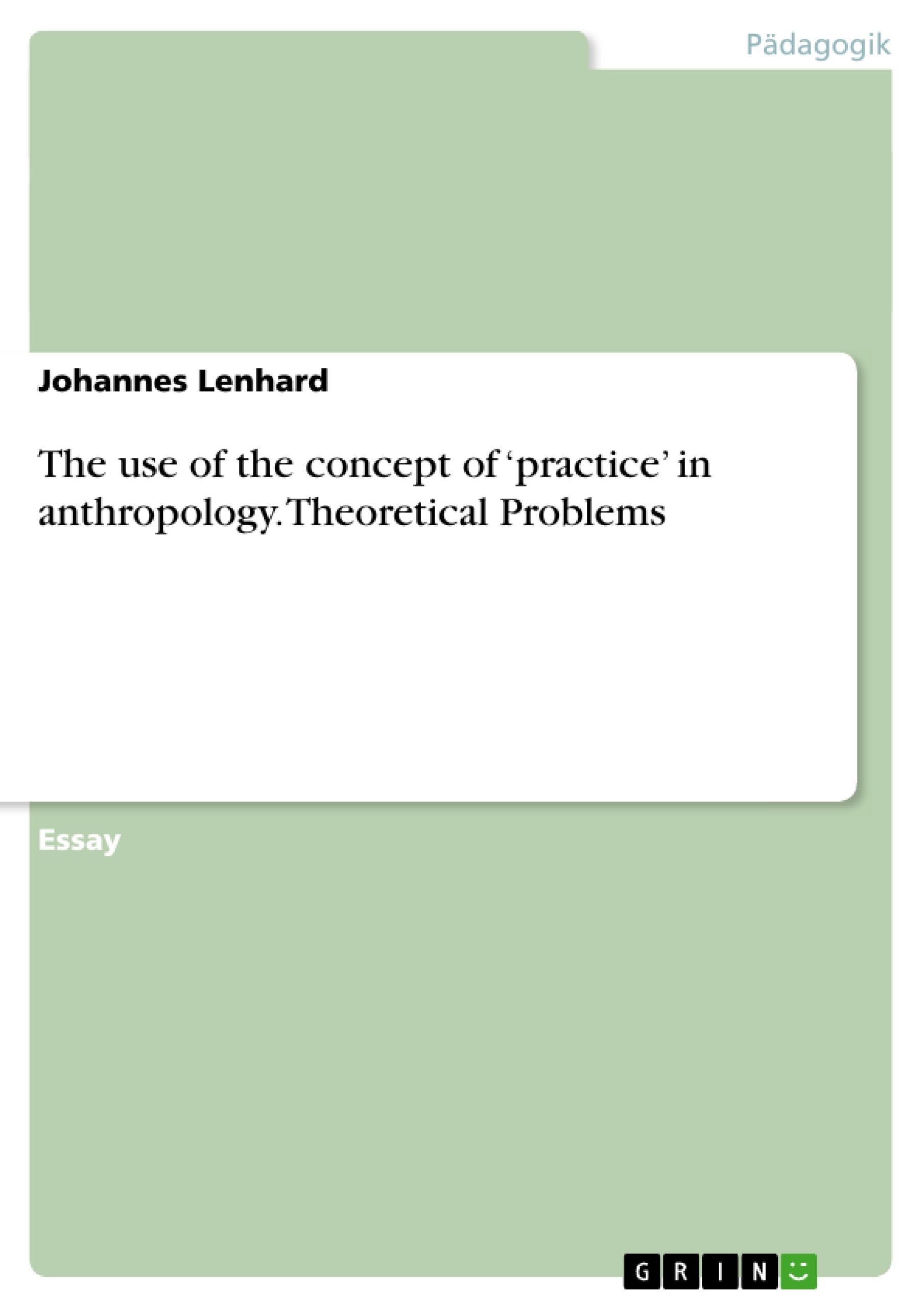Born out of critique on structuralism and its forbearers, practice theory arises in the late 1970s and early 1980s with Giddens in the UK, Bourdieu in France and Sahlins in the States. It most ardently argues for the relevance of intentional subjects in social and cultural process and similarly the impact of history or event upon the wider social structure (Ortner, 1984:137f). Focusing in the following on the work of Bourdieu (1977), Sahlins (1987, 1994, 2000) and later Ortner (1984, 1989, 2006a, 2006b), I argue that practice does mainly aim at solving one major theoretical problem: how do actors and structure interact in order to ‘make’ the world? How can (intentional) individuals be reconciled with the influence of an overarching system of presumptions? Or as Sahlins puts it (2000:295): "how shall we reconcile structure that are logical and durable with events that are emotional and ephemeral". The common ground most authors build shall also serve as a starting point for the more detailed account as expressed by Ortner (2006:2): practice theories "conceptualise the articulations between the practices of social actors on the ground and the big structures and systems that both constrain those practices and yet are ultimately susceptible to being transformed by them”. In essence, practice theory proposes a dialectical relationship as the solution for the dilemma stated above. As part of this overall-endeavour, practice theory in its various forms has several sub-arguments that are concerned with the notions of structure and actor, the possibility of change as well as the importance of history respectively.
What theoretical problems, if any, are solved by the use of the concept of ‘practice’ in anthropology?
Born out of critique on structuralism and its forbearers, practice theory arises in the late 1970s and early 1980s with Giddens in the UK, Bourdieu in France and Sahlins in the States. It most ardently argues for the relevance of intentional subjects in social and cultural process and similarly the impact of history or event upon the wider social structure (Ortner, 1984:137f). Focusing in the following on the work of Bourdieu (1977), Sahlins (1987, 1994, 2000) and later Ortner (1984, 1989, 2006a, 2006b), I argue that practice does mainly aim at solving one major theoretical problem: how do actors and structure interact in order to ‘make’ the world? How can (intentional) individuals be reconciled with the influence of an overarching system of presumptions? Or as Sahlins puts it (2000:295): "how shall we reconcile structure that are logical and durable with events that are emotional and ephemeral". The common ground most authors build shall also serve as a starting point for the more detailed account as expressed by Ortner (2006:2): practice theories "conceptualise the articulations between the practices of social actors on the ground and the big structures and systems that both constrain those practices and yet are ultimately susceptible to being transformed by them”. In essence, practice theory proposes a dialectical relationship as the solution for the dilemma stated above. As part of this overall-endeavour, practice theory in its various forms has several sub-arguments that are concerned with the notions of structure and actor, the possibility of change as well as the importance of history respectively.
First of all, practice theory has a particular way of looking at ‘structure’. It does not naturalise structure but rather embeds it into the literal ‘practical context’. Structure is not a concept in its own right but has a connection to enacted practices. Bourdieu’s (1977) notion of ‘habitus’ makes this particularly clear. ‘Habitus’ can be defined as the "system of durable, transposable dispositions“ as „structured structures predisposed to function as structuring structures“ (ibid.:72). In other words, the individual practices are produced (and limited) by the repertoire of dispositions that you learn ‘through history’. Those practices are, however, not predetermined but rather based on a principle of regulated improvisations” (ibid.:78). One the one hand, this reproduces regularities stemming from the original situation in which the practice was produced “while adjusting to the demands inscribed as objective potentialities in the situation" (ibid.:78). In the complex of the habitus, structure and actor are united: it is a product of history and produces individual practices according to the historical schemes. As a system of dispositions it is “a past which survives in the present and tends to perpetuate itself into the future by making itself present in practices structured according to its principles” (ibid.:82). It follows however not the rules of pure reproduction but constantly undergoes feedback-loops adjusting it to the practices necessary for particular contexts.
[...]
- Quote paper
- Johannes Lenhard (Author), 2013, The use of the concept of ‘practice’ in anthropology. Theoretical Problems, Munich, GRIN Verlag, https://www.grin.com/document/230428




